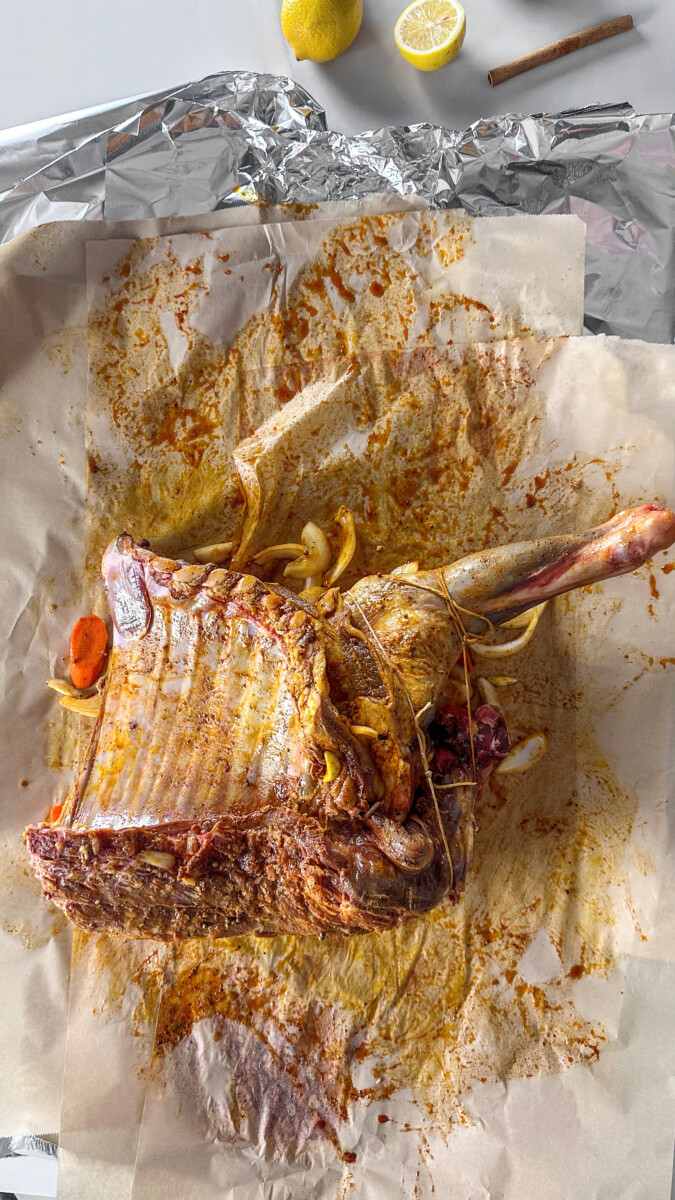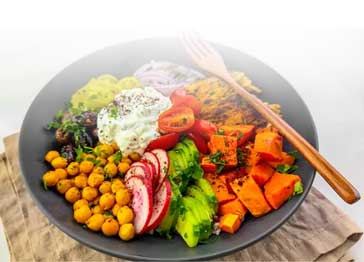Mouth-watering, fall-off-the-bone Slow Roasted lamb shoulder has never been easier to cook. This slow-roasted recipe requires minimal prep time but packs in a lot of irresistible Yemeni flavor. It’s a shame that Yemeni cuisine isn’t familiar in the United States, but that’s what I’m here for! I’ve always wanted to try to make slow-roasted lamb shoulder with the bold, warm flavors of Yemen, including cinnamon, cardamom, cloves, and coriander seeds. At the same time, I love introducing my readers to delicious new types of food that they may have never experienced before. So, this seemed like the perfect opportunity to do both things simultaneously!
This warm, rich, and inviting dish is the perfect meal to serve on a Sunday afternoon for gatherings with family and friends. It pairs perfectly with my incredible Yemeni basmati rice. And while it may sound like a lavish dinner that will take hours to prepare, the truth is that you only need to invest half an hour in preparing the lamb! The rest is all cooking time (in other words, time for you to relax with loved ones!) So, impress your family without breaking a sweat with this unique and exciting recipe.
Slow Roasted Lamb Shoulder Ingredients
- Lamb Shoulder (or Leg): The star of the dish, the lamb shoulder or leg, brings a rich and succulent meaty flavor. Slow roasting allows it to become incredibly tender and juicy.
- Spices (Cumin, Turmeric, Cardamom Pods, Whole Cloves, Coriander Seeds, Black Pepper): These spices are the heart of the Yemeni flavor profile, infusing the lamb with warm, aromatic, and slightly earthy notes. Cumin and turmeric provide depth, while cardamom and cloves add a hint of sweetness and warmth. Coriander seeds contribute a citrusy, nutty flavor, and black pepper brings a gentle kick of heat.
- Vinegar and Lemon Juice: The combination of vinegar and lemon juice is a tenderizing and flavor-enhancing marinade. It helps break down the meat’s fibers and infuses it with a tangy and slightly sour taste.
- Fresh Vegetables (Onion, Carrots, Garlic): These fresh vegetables serve multiple purposes. Onions caramelize and add sweetness, while carrots provide a subtle earthy sweetness and color. Garlic infuses a savory aroma and flavor into the lamb. Additionally, they create a flavorful bed for the lamb to roast on, enhancing the overall taste of the dish.
- Slow Roasting Method: The slow-roasting method, combined with these carefully selected ingredients, results in a mouthwatering and aromatic Yemeni-inspired lamb dish that’s tender, flavorful, and unforgettable.
- Internal Temperature and Doneness: To ensure your slow-roasted lamb shoulder reaches the desired level of doneness, it’s essential to use a meat thermometer. Insert the thermometer into the thickest part of the meat. For well-done lamb, aim for an internal temperature of 160-165°F (71-74°C). This temperature ensures that the meat is cooked through, tender, and safe to eat.
Slow Roasted Method
Tips for Perfect Slow-Roasted Lamb Shoulder:
- Bring the lamb to room temperature: Allow the lamb to sit at room temperature for at least an hour before roasting.
- When roasting, position the lamb shoulder with the fat side up to allow the fat to drip and moisten the meat. Uncover for the last 30 minutes to achieve a golden brown crust.
- Resting time: After roasting, let the lamb rest for about 15 minutes before slicing and serving. This ensures the juices are redistributed, keeping the meat flavorful and juicy.
- Use lamb juices: Use flavorful ones to make a delicious gravy or serve it alongside the lamb.
- Storing leftovers: If you have leftovers, store them safely in an airtight container and consume them within 4-5 days. Reheat by tenting with foil in the oven with leftover juices or broth until fully cooked.
What Should I Serve with Slow-Roasted Lamb?
When serving slow-roasted lamb, especially in the Yemeni style, my recommended companion is Yemeni basmati rice, as mentioned earlier. However, you have numerous opportunities to create a spectacular meal with additional accompaniments. Begin with an appetizer featuring fresh vegetables and homemade hummus, or prepare a refreshing creamy yogurt cucumber salad. Salaita Arabia and Fattoush salads also make excellent choices to complement this flavorful dish.
Step-by-Step Instructions






Ingredients:
| 11 lbs. lamb shoulder | |
| 1 tablespoon salt | |
| 1 teaspoon black pepper | |
| 1 teaspoon cumin | |
| 1 teaspoon turmeric | |
| ⅓ cup vinegar | |
| ¼ cup olive oil | |
| ¼ cup fresh lemon juice | |
| 12 cardamom pods | |
| 10 whole cloves | |
| 1 teaspoon coriander seeds | |
| 10 garlic cloves (sliced) | |
| 1 onion (roughly chopped) | |
| 3 carrots (peeled and chopped into large pieces) |
Preparation
Nutrition Information
The information shown is an estimate provided by an online nutrition calculator. It should should not be considered a substitute for a professional nutritionist's advice.
See our full nutrition disclosure here.







Have you made this delicious slow lamb shoulder recipe yet? Please let me know your feed back. Feel free to leave a comment below.